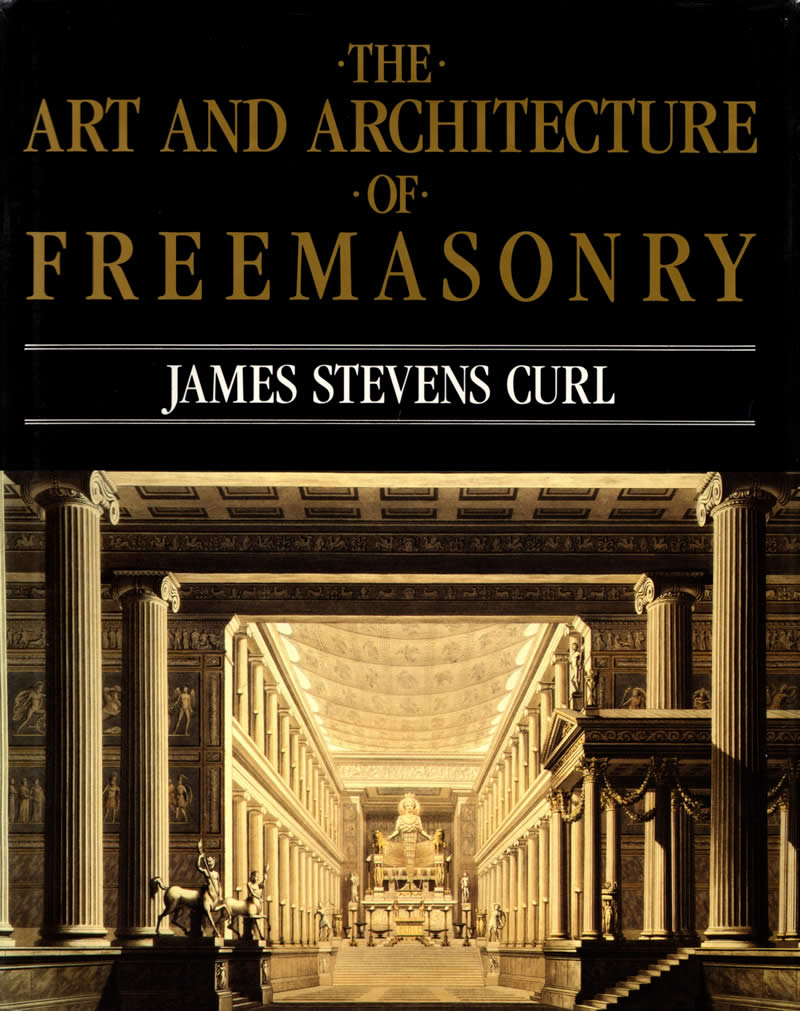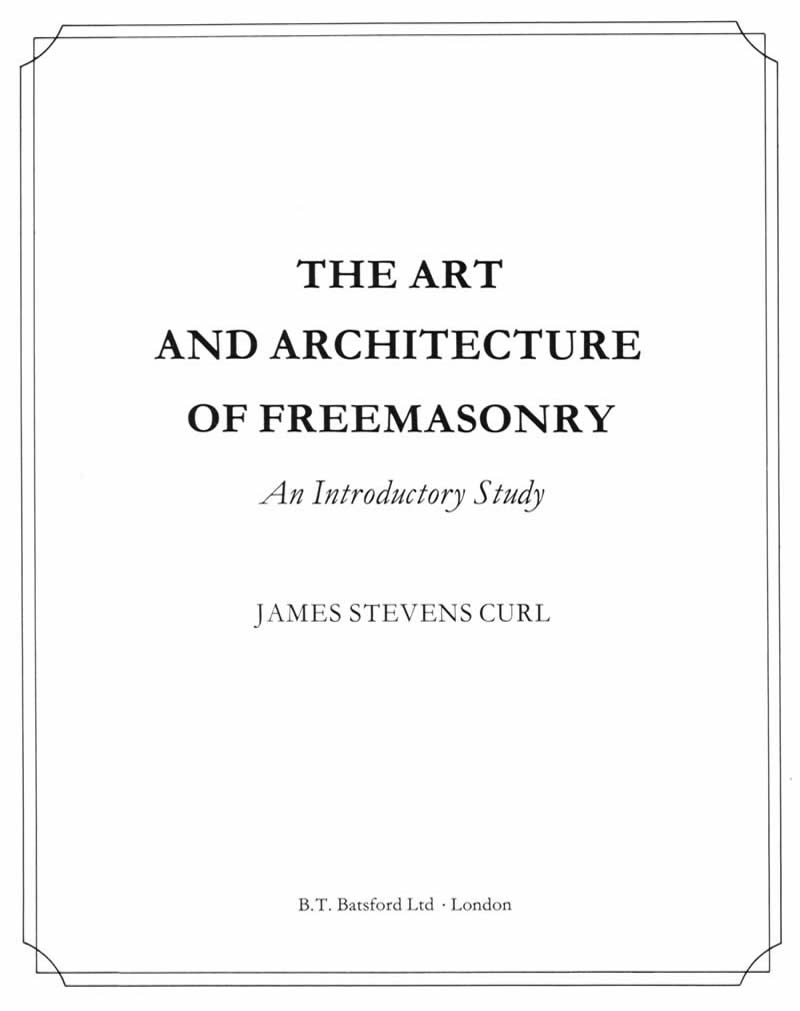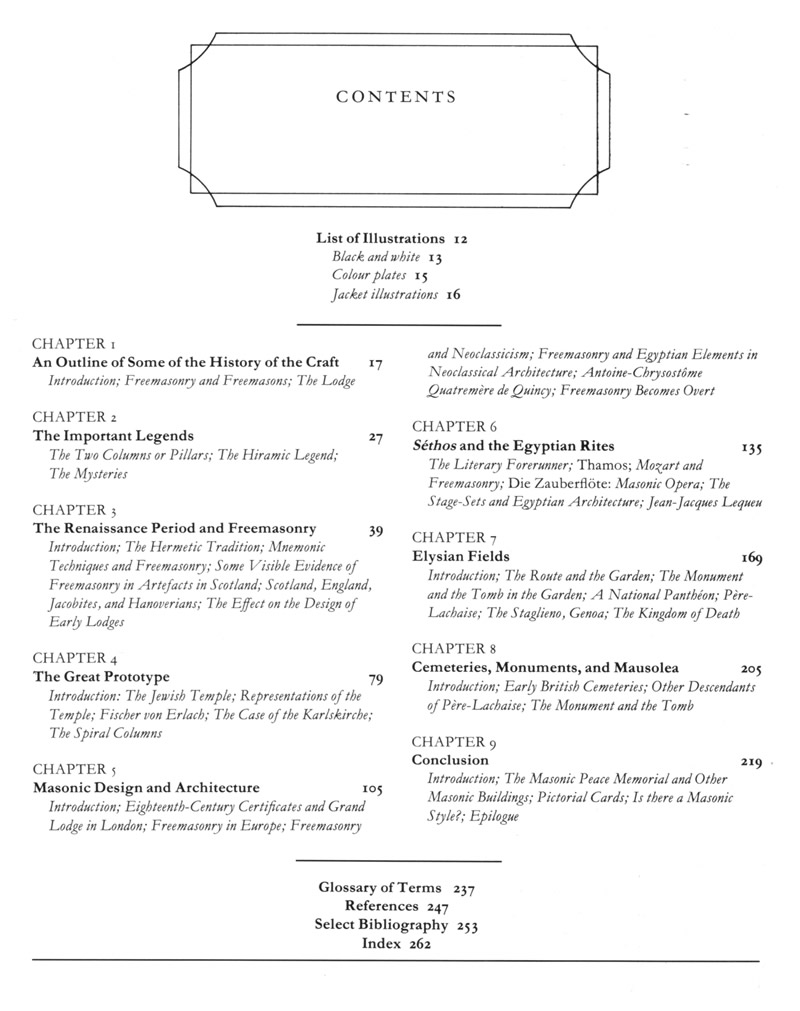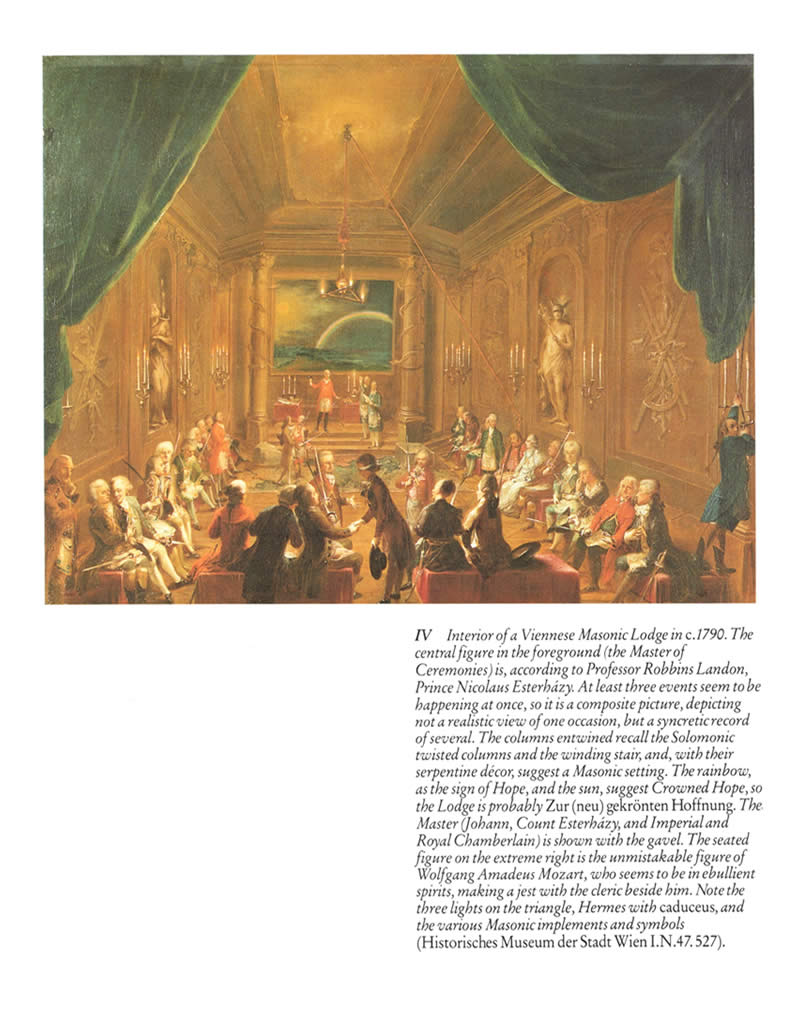The Art and Architecture of Freemasonry: an Introductory Study

Author : James Stevens Curl
Publisher : London: B.T. Batsford Ltd., 1991
0-7134-5827-5 (hbk)
Published by Batsford (1991), this beautifully illustrated work, hailed as a major contribution to scholarship, won the coveted Sir Banister Fletcher Award as Best Book of the Year (1992). It enters territory unfamiliar to many people, yet there has been in Freemasonry much of real significance to European and American culture in visual and musical terms, and especially in architecture.
Tracing the motifs and legends from Antiquity that have influenced Freemasonry, Curl explains the significance of recurring themes, such as the lost Temple of Solomon, the role of the mediaeval Guilds, Hermeticism, and the often strange world of 18th-century Neo-Classicism. He reveals how Masonic ideas permeated the design of parks, gardens, and cemeteries, and describes the literary and architectural aspects of Masonic obsessions with Ancient Egypt. His book contains a fascinating discussion of Mozart’s Magic Flute, taking into account Masonic and other elements in the music, libretto, and stage-designs.
Complex ideas and iconography within Freemasonry are explained in a glossary of terms, and the close links between the Craft and architecture are outlined: in particular, the significance of the architect’s and stonemason’s instruments and tools, which in Freemasonry have important symbolic and moral connotations, is revealed.
Curl’s illustrations are exceptional, and are accompanied by detailed captions, in themselves an illustrated history of elements found in Freemasonry. Based on meticulous original research, the book ranges over an enormous amount of material, and explores massive collections of literature, as is clear from the Bibliography.
Reviews
‘Curl…. has… provided a fascinating entire history of freemasonry and its manifestations in art and architecture. He modestly subtitles it “An Introductory Study”, so does not make claims for its completeness. Curl gives Vidler full credit for his work, but goes far beyond him, first in providing a thorough and learned history of freemasonry through the ages (more complete than Yates’s study) and then by discussing such recurring themes as the Temple of Solomon, medieval guilds and Mason’s tools, the hermetic tradition, and the concern with ancient Egypt… An invaluable glossary of Masonic terms and of words with implications for Masonry is not only a major contribution but evidence of the author’s thoroughness. In the introduction and throughout the book the excellent, unusual, and well-chosen illustrations not only enrich the text but amplify it by the very complete explanations published beneath them. It is this part of the book in which Curl makes his greatest contribution. In the succeeding chapters the author proceeds by a skilled combination of chronological and topical approaches to discuss subjects such as the legends of the two columns or pillars, the story of Hiram and the building of the temple, and the mysteries… This is followed by excellent summaries of freemasonry during the Renaissance and of the Temple of Solomon and its influences on such architects as John Wood and J. B. Fischer von Erlach. In all these, Curl describes overt and covert Masonic symbolism. Perhaps the most valuable chapter for architectural historians is that devoted to Masonic design and architecture in the eighteenth century. This includes a discussion of works built specifically for Masonic purposes such as lodges, as well as those influenced by or exhibiting Masonic symbolism… Curl has laid a firm foundation and brilliantly illuminated the history of freemasonry…’
‘.... a huge and handsome volume... (which) ... postulates ideas that will set the traveller and historian thinking. (The book) is one that is likely to remain the standard work. Curl explores the symbiotic links between Freemasonry and the Enlightenment... The author is to be congratulated on his unique and innovative work.’
‘Curl’s book is a mine of information, to take the area of eighteenth-century French gardens as just one instance... The Masonic and occult world of the eighteenth century is indeed strangely interwoven. Curl’s book is a fascinating introduction to it.’
‘…one likes to think of scholars as courageous, adventurous individuals, resolute in their search for truth. But there are two subjects in particular which scholars tend to avoid: mysticism ... and secret societies. The latter, by their very nature, are difficult to research; rumour abounds and documentation can be unreliable... None the less, there have been excellent models for such investigations ... and now Curl has offered us an explanation of the artistic and architectural influence of the Freemasons. Such a book is long overdue… If the jardin anglais or anglo-chinois was an imitation of English models, why did the Continent not follow the English line of development, leading to the simplified Edenic landscapes of Capability Brown? Why the heavy emphasis on tombs and symbolic garden buildings, to the extent of seeming a discordant clutter to an English eye? ... If the landscape garden is seen in terms of the image of Nature, its Continental manifestations are, and have often been regarded as, somewhat unsatisfactory. Curl’s interpretation in terms of Masonic tradition makes better sense of the Continental landscape than the previous accounts I have found. It also reveals a curious blind spot in the work of previous historians of the subject: once the Masonic symbolism in Goethe’s Wahlverwandtschaften has been spelled out, it become astonishing that (other) works could ignore the issue. Professor Curl deserves our thanks for having opened the subject up, and any future studies on the Continental landscape garden and on the emergence of garden cemeteries will have to take his work into account.’
‘What a delight to welcome a scholarly, but eminently readable, text on a new subject so beautifully produced and copiously illustrated! The thoroughness of Professor Curl’s research is amply demonstrated by the select bibliography and the lucidity and cogency of his writing.’
‘It is rare to be able to welcome an important new book on an entirely new subject. After many years research ... Professor Curl has developed a wholly new interpretation ... In his book, written with passion and scholarship Curl reaches ... exciting conclusions. This stimulating book is beautifully written, richly documented, and handsomely produced with numerous illustrations in colour and black and white. Every student of eighteenth-century European culture should read it and ponder its many implications.’
‘… extremely valuable for its superb illustrations, many of which are not readily available elsewhere. The book is ... beautiful, unusual, and ... useful.'
‘The Art and Architecture of Freemasonry is an important book dealing with a subject that has intrigued many but has also received only scant attention or sensational treatment. The most valuable aspect of it is the wealth of illustrative material ... The glossary is extremely clear and useful and there is a full bibliography.’
‘Freemasonry has not had a good press; Curl redresses this balance, describing the role of Freemasonry in Europe during the Enlightenment, and its contribution to music, architecture, and landscape design... The book is magnificently illustrated and has a useful glossary ...’




 LinkedIn
LinkedIn  Wikipedia
Wikipedia